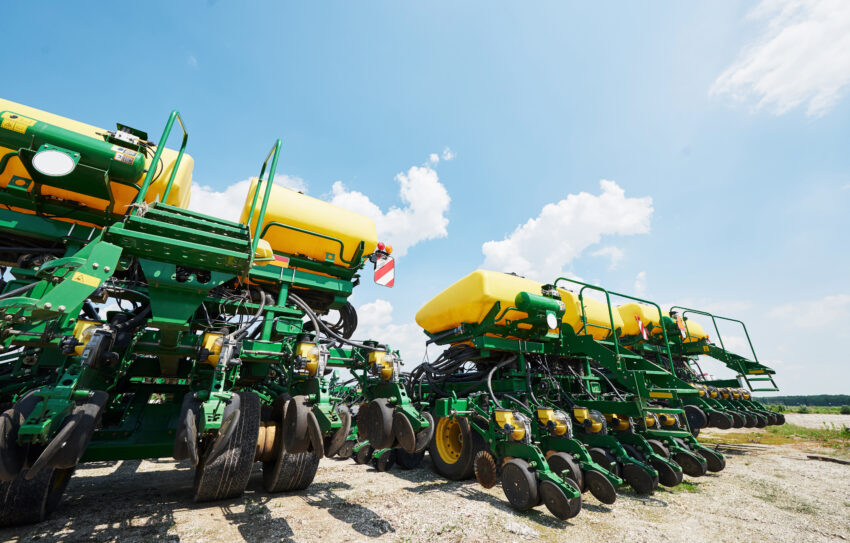As the agricultural community gears up for the 2025 planting season, the U.S. Department of Agriculture (USDA) is set to release two pivotal reports that will provide critical insights into the nation’s farming landscape. Scheduled for Monday, March 31, 2025, the Prospective Plantings report and the quarterly Grain Stocks report will offer an early glimpse into the production potential for spring-planted crops and an inventory update on grains still held from the 2024 harvest. These reports, as detailed in a recent article by Chris Clayton on DTN Progressive Farmer, are poised to influence market expectations and farmer decision-making in the months ahead.
Prospective Plantings: A Forecast for 2025
The Prospective Plantings report, based on surveys conducted earlier in March, will estimate the intended acreage for major crops such as corn and soybeans across the United States. According to Clayton’s article, “Analysts’ average estimate for corn acres comes in at 94.2 million acres, up from the 91.5 million acres estimated by USDA in its January crop production summary for 2024” (Clayton, 2025). This projected increase suggests a potential shift in farmer priorities, possibly driven by market conditions or crop rotation strategies. For soybeans, analysts anticipate a decline, with an average estimate of 83.8 million acres, down from the 86.1 million acres planted in 2024.
These figures, while preliminary, are not set in stone. Weather patterns, economic factors, and global demand can all alter planting decisions as spring progresses. The USDA’s survey, which sampled approximately 62,400 producers nationwide, provides a snapshot of farmer intentions as of early March. However, as Clayton notes, “USDA will update acreage numbers again with the Acreage report at the end of June based on farmer surveys and actual planted acres” (Clayton, 2025). This flexibility underscores the dynamic nature of agricultural planning, where adaptability is key.
Grain Stocks: Assessing 2024’s Legacy
Complementing the Prospective Plantings report, the Grain Stocks report will detail the volume of corn, soybeans, and wheat still in storage as of March 1, 2025. This inventory assessment is crucial for understanding supply levels heading into the new planting season. Clayton highlights that “Analysts expect an average estimate of corn stocks at 8.53 billion bushels, up from 8.35 billion bushels reported by USDA on March 28 last year” (Clayton, 2025). For soybeans, the estimate stands at 3.14 billion bushels, a slight increase from the 3.0 billion bushels recorded a year prior.
These stock levels reflect not only the success of the 2024 harvest but also the pace of consumption and export demand over the past year. Higher stocks could signal a surplus, potentially softening market prices, while lower-than-expected inventories might tighten supply and bolster prices. The interplay between these stocks and the forthcoming planting estimates will be closely watched by traders, analysts, and farmers alike.
Market Implications and Historical Context
The release of these reports comes at a time when agricultural markets are navigating a complex landscape of global competition, weather uncertainties, and economic pressures. Clayton points out that last year’s Prospective Plantings report initially pegged corn acreage at 90 million acres and soybeans at 86.5 million, but “USDA’s January Crop Production Summary then bumped corn up to 91.5 million acres and dropped soybeans to 86.1 million acres” (Clayton, 2025). This adjustment illustrates how initial estimates can evolve, influenced by real-world conditions like late spring rains in the Upper Midwest, which shifted some corn acres to soybeans in 2024.
Analysts surveyed by Reuters offer a range of predictions, with corn acreage estimates spanning 93.2 to 95 million acres and soybeans from 82.5 to 85.2 million acres. This variability reflects the uncertainty inherent in early forecasts, yet it also underscores the reports’ significance as a baseline for market expectations. As Clayton writes, “USDA’s Prospective Plantings and quarterly Grain Stocks report, set for release on Monday, March 31, will serve to give an early look into production potential for spring-planted crops” (Clayton, 2025).
Looking Ahead
For farmers, the data released on March 31 will be more than just numbers—it will shape planting strategies, financial planning, and market positioning. The anticipated uptick in corn acres and reduction in soybean acres could signal a strategic response to current commodity prices or soil management needs. Meanwhile, the Grain Stocks report will provide a reality check on how much of last year’s harvest remains, influencing decisions about storage, sales, and future planting.
As spring unfolds, the USDA’s initial estimates will be refined with subsequent reports, culminating in the June Acreage report. Until then, the agricultural sector will lean on these early indicators to navigate the uncertainties of the 2025 growing season. With the release just days away, all eyes are on the USDA to set the stage for what promises to be another dynamic year in American agriculture.
Citation: Clayton, Chris. “USDA to Kick Off Spring 2025 With Acreage Estimates, Stocks Refresh.” DTN Progressive Farmer, 27 Mar. 2025, https://www.dtnpf.com/agriculture/web/ag/news/article/2025/03/27/usda-kick-spring-2025-acreage-stocks.


